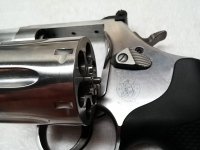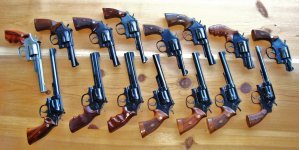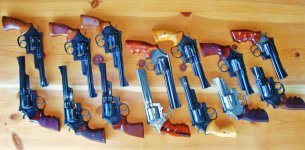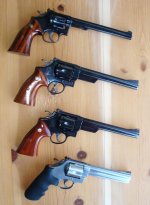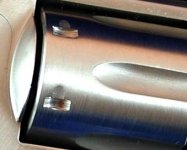I've been shooting S&W revolvers for a little over 30 years. I've had some used ones that had seen hard use... showed it. I've had some new ones that I gave hard use. Shoot 'em hard enough long enough and you'll see some wear... turn lines, wear in the cylinder locking notch, end-shake, scrub mark on the recoil shield, thinning of the blue on the front and back of the grip, scuffs and scrapes and dings, etc. I've seen exactly the same type of thing with brand new 1911's, Colt Pythons, Ruger Redhawks, Ruger SA revolvers, etc., etc., etc.
If you buy a new car, economy or high-end, you will if you look hard enough find something to complain about. It is the nature of modern mass production. If you want a car, or a suit or a pair of shoes made exactly to your specifications and made absolutely perfectly, you have to get off your wallet and you have to be willing to wait sometimes a long time because no store/dealer will ever have in stock just exactly what you want made without any possible flaws at all.
Reality is few if any are willing to pay the freight for a custom made pistol. The economies of scale that enter into mass production of consumer goods makes it possible for most folks to afford excellent quality goods that address the general needs/requirements of consumers.
S&W has done a remarkable job of managing to meet consumer demands, develop new products, adapt to changing market demands, negotiate often irrational and even hostile legislative hurdles and develop new calibers/pistols that other manufacturers can only envy and emulate.


